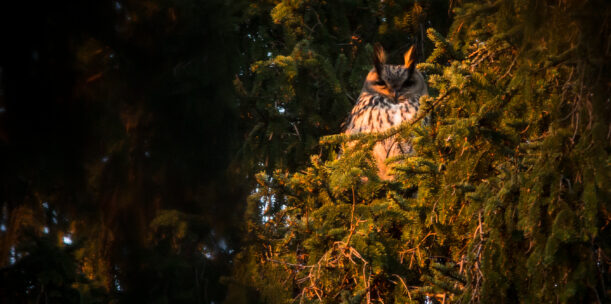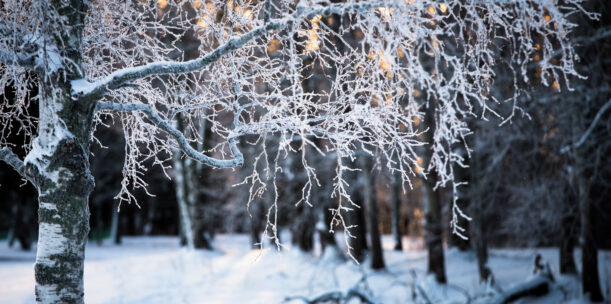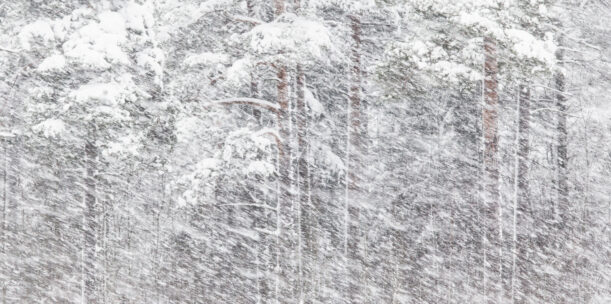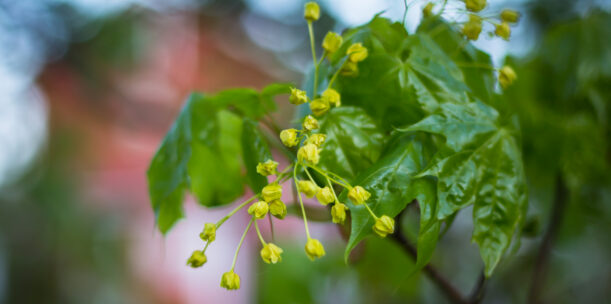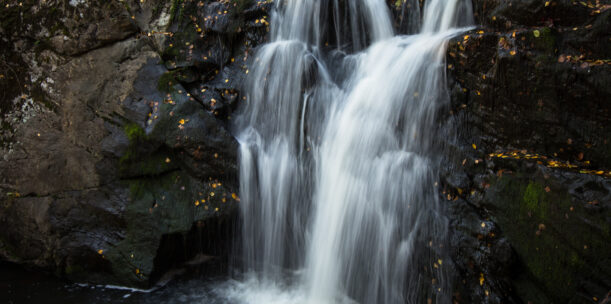Pictures Teemu Saloriutta
Patterimäki and the Pitäjänmäki fortifications
Patterimäki was excavated to make a fortification during the First World War (1914–1918). Thousands of fortification labourers were employed in the Helsinki region by Russia to build fortifications. Most of them were Finns. In 1916, the labourers also included ‘Chinese’ people, or Mongolian and Kyrgyz people, some of whom were prisoners of war. There were many accidents in the fortification worksites as excavation work included blasting. Trains would bring people to work aboard open cargo cars. Some slept in barns and wherever they could find some shelter, and free time was coloured by wild antics and card playing. The fortification work entailed felling plenty of trees and commandeering land.
The trenches in the Pajamäki area surround the rock, which houses bunkers and storage caverns. The purpose of the Patterimäki fortification was to monitor the train tracks and road to Turku. The front line of the fortification system was located in Leppävaara, where you can find similar impressive fortifications carved into rock. 11 April 1918. A brief battle was fought in Leppävaara.
During the Continuation War (1941–1944), anti-aircraft artillery batteries containing a total of four pieces of artillery were located on Patterimäki hill. Touko Laaksonen, a.k.a. ‘Tom of Finland,’ served as the commander of this artillery battery for a couple of years during the Continuation War. There was a field canteen at the top of Patterimäki, where Touko Laaksonen had a piano. Being musically gifted, Laaksonen taught playing and singing to other soldiers, and the canteen orchestra also included mandolins, violins and a willow whistle. Laaksonen was eventually promoted to the rank of Lieutenant. He served as an anti-aircraft fire control officer during the great air raids on Helsinki in February 1944. After the war, a dance pavilion was erected on the hill.
All fortifications in Helsinki were protected as historical monuments in 1970. The fortification sites are home to some rare plants typical to the environment, such as crane’s bills and wall lettuce. These plants have benefitted from the lime and nutrients generated by excavation and masonry work.
“The effort was huge, but the result would only ever benefit foxes that found shelter in the giant excavations and meandering trenches years later,” Keijo Kylävaara wrote about the fortifications in his book Vuosi seitsemäntoista (1967).
Mätäjoki
Mätäjoki River is the largest creek in Helsinki. It is a former bed of the Vantaa River. The river bed was formed some 4,000 years ago due to post-glacial rebound, after which the Vantaa River emptied into the sea through two estuaries for two thousand years. Post-glacial rebound caused this estuary to detach from the Vantaa River and become a creek roughly 2,000 years ago. There was a rocky spot at the location where the river branched to the north of Kaivoksela, which made it impossible for the river bed to deepen through erosion. Only a 400-metre step separates the Mätäjoki River from the Vantaa River at the headwaters.
The former glory of the Mätäjoki River as an estuary of the Vantaa River was discovered in the 1920s.
The Mätäjoki River is a little over nine kilometres long, its catchment area is 24 square kilometres and it runs through the areas of the cities of Vantaa and Espoo. The average flow of the river is 170 litres per second and a further 55 litres per second is drained into the Mätäjoki River from the Silvola reservoir during the summer months. The additional water improves the water quality of the slow-flowing river.
In Pitäjänmäki, the river has a small waterfall. A rocky bank makes the water gush straight down for a few metres. A small pond park is located below the waterfall, sheltered by trees.
The Mätäjoki River already had the Swedish name of Ruttin ån in the 1830s, and the name was translated to Mätäjoki, ‘rotten river’, in the early 20th century. The name is thought to have originated with a shipmaster named Ruti, who lived in Kaarela in the 16th century.
There were attempts to rename the river towards the end of the 20th century, but the original name stuck.
Tali allotment garden
The Tali allotment garden was established in 1936. The area now has 241 allotment garden plots. The garden is fenced and open to the public arriving on foot daily from May to September.
The farmhands’ quarters of the old Tali Manor still stand on the southern edge of the area and serve as a party venue for the gardeners. A dance pavilion was built next to them after the war. A Midsummer festival along with an open air dance open to the public are held at the quarters. A sauna was built in the allotment garden in 1949.
The first allotment garden in Helsinki was established in Ruskeasuo in 1918. The Kumpula allotment garden dates back to 1926, whereas the Herttoniemi allotment garden was established in 1934.
Tali has the oldest golf course in Finland. The fields of the Manor were designated as a golf course in 1932. The golf course is rented by Helsinki Golf Club. You must look out for rogue golf balls when walking on the roads in the course area and along its edges. The manor now serves as a restaurant and is open to the public.
[caption id="attachment_9366" align="alignnone" width="2560"] Talin siirtolapuutarha 1960, Grünberg Constantin. Taustalla Pajamäki.[/caption]
Talin siirtolapuutarha 1960, Grünberg Constantin. Taustalla Pajamäki.[/caption]
Tali Manor
Once upon a time, Tali Manor was surrounded by fields on the shores to the east of the Iso-Huopalahti gulf, which was silting up. The Manor was built in the late 1700s. Alberga Manor was located to the west of Tali. The landscape on the gulf between these two manors was low-lying meadow.
A note written by Magnus von Wright in June 1848 states that a northern lapwing with two chicks was spotted near Tali. The northern lapwing was a rare bird in southern Finland at the time, and this is its first verified nesting near the capital.
A landfill was established in Iso-Huopalahti, operating from 1963 to 1979. The landfill hill was landscaped. It is currently a hill overgrown with young forest, and it is difficult to tell it apart from a natural slope.
Beer at the rapids
The Mätäjoki rapids are the only waterfall in Helsinki. The Munkkiniemi Manor sawmill and mill used to be located downstream of the rapids. The squire of the Manor, Petter Sund, transformed the mill into a brewery and established Talin krouvi (Tali tavern) on the site in the early 1700s. In 1874, the Bavarian master brewer Johann Kaspar Kröckel established a new brewery on the site, which later became a success. More than 20 horses would transport the goods to Helsinki and Hämeenlinna. The most significant customer was the Russian garrison in Helsinki. The brewery burnt down in 1914. The suspected cause of the fire was the blasting work on the fortification worksite.
The wolves of Tali
The Munkkiniemi tavern used to be located close to the Mätäjoki waterfall, next to the main road. In the 1800s, wolves were caught in the area using a large wolf trap called a wolf pen. The pen contained a pit covered with branches, into which the wolves would fall. Bait, such as a live duck, would be placed on a platform suspended on a post in the middle of the pit. In 1860, a newspaper wrote that the trap had already successfully caught 15 wolves and 32 foxes within the year. One night, the pit contained three dogs, a fox and a wolf, each in their own corner.
A wolf that would later be stuffed by Magnus von Wright and subsequently included in the collections of the Natural History Museum was caught in the trap in winter 1853.
Wolves roamed Helsinki until the 1880s, when they were hunted out of existence in southern Finland.
Flying squirrels in Tali
“My painting was interrupted,” Magnus von Wright wrote in his diary on 8 June 1853. This time, the interruption was caused by Siberian flying squirrels. A mother and three kits that were not yet fully grown had been discovered in Tali, where they had nested in a barn. They were brought to Magnus, and he had to go outside and fetch food for the poor animals. He fed them birch, aspen and pine branches that he picked up on his way to the Kaisaniemi Botanic Garden.
Magnus had many kinds of birds as pets, and he used them as models for his paintings.
Magnus stuffed animals for the Natural History Museum. In 1852, he had already stuffed one hundred animals.
He had received flying squirrels at home before this, as well. In January 1846, a live flying squirrel had been caught in Huopalahti and in May 1832 in Munkkiniemi. Interestingly, these were all locations where the first habitats of the Siberian flying squirrel spreading to Helsinki from Espoo were found in the 2010s.
